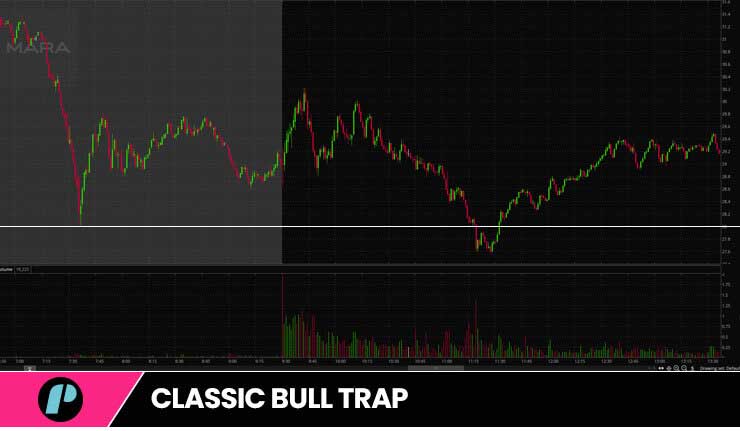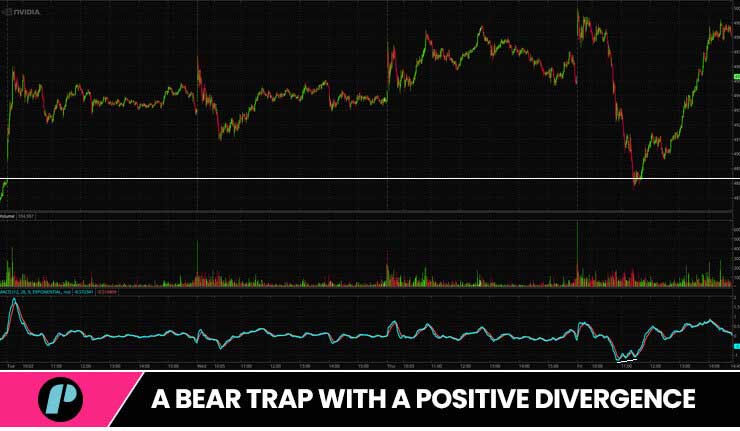
Introduction
Markets, as well as charts, are not always easy to read. Traders have to constantly keep gaining experience and knowledge to benefit from the profits the market has to offer by making trading decisions as well-informed as possible. Amongst other things, they must prepare themselves to be surprised by the market twists and turns, and learn how to react to any new unexpected obstacle the market can throw on their chart.
In this article, we are going to discuss one of such “obstacles”: the Bear Trap.
Key Notes
- Bear trap is a classic smart money manipulation
- Retail traders can avoid being trapped if they understand market behavior
- Examining the bear trap from a few angles will give you a better edge
- Risk management will be the key to your success
What is a Bear Trap?
Bear traps are situations that usually occur in two stages.
The first stage sees a price reversal from a bullish trend accompanied by bearish results by either fundamental indicators, technical, or both. The reversal, for instance, could follow a negative public announcement (such as a bad earnings report) that causes the stock to be considered overvalued whilst, on the technical side, RSI and Stochastics may both be indicating “overbought stock”.
During this first stage of the Bear Trap, conditions seem to be ideal for opening short positions, and, each time, many traders go ahead and do just that. This process increases the selling pressure and, at least temporarily, pushes price somewhat further down.
The second stage of a Bear Trap starts with another reversal. This time, it’s a bullish move that interrupts the downtrend and triggers short sellers’ stop-loss orders or forces them to manually close their positions to limit their losses. Because short-sellers have to re-buy stock at a higher price than they have sold it for, they end up creating more pressure on the market than they did when opening those same short positions. Clearly, this time the pressure is on the buying side making it easier for price to rise even further.
Needless to say, the two reversals that characterize a Bear Trap, result, more often than not, in significant losses for any short trader who falls into the bear trap.
It needs to be noted that Bull Traps can and do also happen; they work in the exact same way but, obviously, in the opposite direction.
What factors can create or contribute to a Bear Trap?
Excessive fear and excessive greed
The most common contributors to Bear Traps are the emotions-based actions taken by traders whilst experiencing excessive greed or excessive fear.
Sometimes, during the first stage of a Bear Trap, excessive greed can cause traders to make rushed decisions and open short positions to take advantage of what seems like a new trend and, at the same time, cause traders with long positions to close them prematurely.
Market Manipulation
Only a small part of all the Bear Traps are thought to be the result of manipulation, yet market manipulators are known to take advantage of – and sometimes create – Bear Traps to induce panic among traders, creating selling pressure and, ideally, benefiting from lower prices.
Manipulation of this kind often includes spreading “fake news” and manipulating order books through high-frequency trading algorithms.
Technical Analysis Misinterpretation
Bear traps can be the result of traders being misled by misunderstood technical indicators and pattern formation. The extreme greed and fear we spoke about earlier, play an important role in making it easier for traders to “see what they want to see” rather than what they actually have in front of them.
Even common indicators, such as moving averages, support and resistance levels, and trend lines, can sometimes provide false or dubious signals when market conditions are volatile or seem to have no clear trend..
Macro Events
Bear Traps can also be triggered by fundamental factors such as companies’ reports and announcements as well as unforeseen macroeconomic events, such as sudden policy changes, geopolitical conflicts, or economic crises. These events can introduce uncertainty and increase market volatility, leading to false trends and trapping traders with incorrect positions.
What can you do to try and avoid a Bear Trap?
Bear Traps can be hard and challenging to avoid completely but there are strategies that traders often employ to reduce their exposure and mitigate risks.
Here are a few strategies you can start utilizing yourself:
-
Technical Analysis:
Moving Averages: Examine longer-period moving averages to confirm the trend. If the price moves up but the long-term moving average is still downward, it might be a trap.
Volume Analysis: A genuine upward trend is typically supported by increased volume. If the price is increasing but the volume is declining or not increasing significantly, be cautious.
Support and Resistance Levels: Identify key support levels. A bear trap may occur just below a support level.
-
Fundamental Analysis:
Company News: Stay informed about the company’s financial health and recent news. Sometimes the price can start to increase on rumors rather than substantial changes in the company’s fundamentals.
Economic Indicators: Pay attention to economic reports and indicators that could affect market trends. If the macroeconomic situation doesn’t support the uptrend, it might be a trap.
-
Market Sentiment Analysis:
Investor Sentiment Indicators: Watch for signs of overly pessimistic or overly optimistic sentiment. If investors are extremely bearish, any slight uptick might cause a wave of buying that doesn’t last.
Contrarian Indicators: Sometimes it is valuable to look at what the majority of traders are doing and consider the opposite. If everyone is expecting the market to rise, it might be time to be cautious.
-
Patience and Confirmation:
Wait for Confirmation: Before making a trade based on a potential reversal, wait for additional confirmation from subsequent price movements or indicators.
Consider Multiple Time Frames: Look at charts across several time frames to get a bigger picture view.
-
Risk Management:
Stop-Loss Orders: Always have a stop-loss in place to limit potential losses in case the market moves against your position.
Position Sizing: Don’t put too much capital into one trade, no matter how confident you are in the trend reversal.
Remember
Remember that even the most experienced traders can occasionally get caught in market traps. Constant learning, discipline, and adherence to a well-thought-out trading strategy are key to avoiding Bear Traps.
As always, I hope this helps!
If you liked this post make sure to share it!









